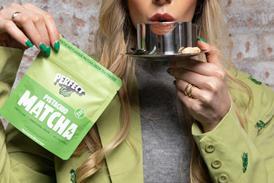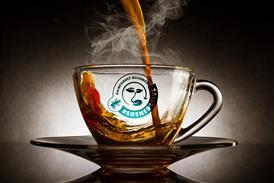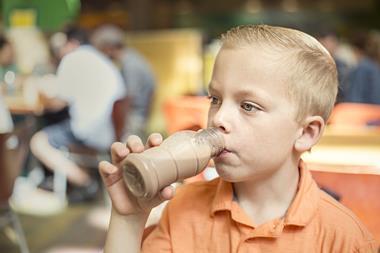For the sad fact is that after years of continued growth, the confectionery juggernaut is slowing down and now shows early signs of decline.
The trend first became apparent last year when The Grocer reported a 3% value/5.6% volume dip on the figures supplied by TNS Impulse. The market research company's latest data shows a 2% value/5% volume fall for 52 w/e 24 June 01 on a measurement of 85% of the market, which it values at nearly £3.7bn.
It should be noted that getting an accurate measure of this market is extremely difficult because of the high level of impulse sales.
The industry as a whole puts the total market at between £5.5bn and £5.8bn, a combination of independent market data and manufacturers' estimates.
TNS figures are confirmed by similar data from the other leading market researchers, AC Nielsen and Information Resources.
TNS figures show that most sectors are down or flat, the exceptions being the fruits segment of sugar confectionery where there has been a considerable amount of innovation, and twistwrap assortments which have seen a huge amount of price promotion by the multiples.
With the market in a parlous state, it's astonishing to discover that no-one really knows the reasons why. After a difficult year, it is not inconceivable to expect the big players to have invested in market studies and to have come up with some concrete answers. But as Mars UK sales director Chris Page explains: "It's not an easy thing to research because it's incredibly complex. We think four or five slightly negative things are going on at the same time and are combining to have this damaging effect."
"Firstly," says Page, "impulse outlets which traditionally formed the backbone of confectionery sales have fallen by a third in the last eight years, and this is starting to hit hard.
"The multiples are presenting confectionery much better and doing a lot of promotions, but the improvements are not enough to make up for the loss of impulse outlets. Impulse sales are down 5%, while grocery sales are up 3% for the first half of this year (IR). "There's also increased competition from the huge range of snack alternatives which have come on to the market. And there's the growth of mobile phone cards which are mostly bought by children and the 14-20 age group who are also core consumers of confectionery. We think they are spending a proportion of their income on cards rather than on confectionery."
Tony Blay, The Co-operative's head of category for grocery impulse, believes also there has been a lack of real innovation in the market to excite consumers and stimulate sales.
"Conversely, there have been too many limited editions and flavour variants. People are getting bored, and they cannibalise core brand sales," he says.
Innovation or the lack of it is a contentious issue. "The current trading environment isn't conducive to nurturing new brands," says Bendicks head of marketing Anne Hollamby.
"Trade rationalisation and the increased focus on category management means there are fewer opportunities to establish new brands, particularly in developed sectors. New brands must justify their shelf space from day one, building a rate of sale that's equivalent to well-established brands.
"Rate of sale is becoming increasingly promotionally driven with stronger price offers and higher investment in promotional support, leaving less for above-the-line brand support and development. As a result, there have been fewer but bigger new brand launches and an increasing number of range extensions where above-the-line brand support costs can be shared across the whole brand and volume built quickly by stretching the existing consumer brand franchise.
"Continuing commercial pressures will inevitably mean this trend continues for the foreseeable future.""
Although there are no quick fixes to any of these issues, the concensus among the big players is that a return to true product innovation would help reinvigorate the market. "It's vital," says Chris Morgan, customer relations director for Cadbury Trebor Bassett.
But who will take the lead on this?
Nestlé Rowntree has been pursuing a policy of innovation through renovation', says its sales communication manager Graham Walker. "Our focus is to innovate within existing brands to fill the gaps. Aero Honeycomb takes the brand into a new consumer area, as does Blue Riband Munchy Bites which is aimed at a younger audience than the Blue Riband brand. And with Rowntree Megabeans, we are taking fruit sugar confectionery to teenagers and to young adults.
"We've not spotted an area yet that requires completely new product development, but it could happen. The only exception is All Stars, our new twistwrap assortment for kids, but that uses our existing brands."
A big focus for innovation in the coming year, says Walker, will be packaging, PoS and promotion. "There will be more dynamic use of media, such as our mobile phone text-messaging campaign for Toffee Crisp," he says.
Cadbury Trebor Bassett's Morgan says the company will be doing fewer extensions. "We need to put our attention back into innovation, but it has to be truly innovative and all manufacturers have found it a difficult task in the last few years. "For us, it could be pack development, with different sizes and formats to suit different user occasions, and finding new usages for existing products."
A big focus for the company is the development of its Bassetts and Trebor brands. "We'll be continuing to do a lot of work with Bassetts, a very important brand in sugar confectionery. And we're about to relaunch the Trebor mint range to give more emphasis to the Trebor name." On the chocolate front, the big development is this month's return of Snowflake, the countline Cadbury had to withdraw weeks after its launch last autumn because production couldn't keep up with demand. "We've increased production capacity, and now it's back for good," says Morgan.
Mars' Page says the company is going to put more resources into fundamental innovation. "We can't say what we're doing, but one example is Snickers Cruncher which we've just launched.
"We would argue it is a new product design because it's an easier eat than heavier bars, is not a limited edition or flavour variant and not necessarily associated with Snickers. We're also looking at developing products in the good for you' area."
The big three are also stepping up their retailer activities to try to boost sales. "One of the big problems in the independents is lack of availability of key brands and the profusion of choice," says Cadbury Trebor Bassett's Morgan. "We see a big opportunity to persuade retailers to stock the right products and have re-structured our sales force to concentrate on increasing availability in traditional outlets."
Nestlé Rowntree has developed putting temptation within reach', a merchandising programme with small hook-on display units that enable its main chocolate and sugar countlines to be sited in other fixtures to capture impulse sales.
Mars and Cadbury Trebor Bassett are also pursuing new channels for their products. "We're looking at developing distribution in leisure, education, vending and the workplace to compensate for the loss of impulse outlets," says Mars' Page.
Cadbury Trebor Bassett has similar plans, as Morgan outlines: "Since June, part of our sales force has been concentrating on developing new outlets, such as garden centres and special events.
"An area of huge possibility is pubs and we're talking to the pub trade to develop the right pack formats and merchandising units."
With all the energy being ploughed into the confectionery market, there's a good chance that its fortunes could be turned round by this time next year.
{{FOCUS SPECIALS }}
Close menu
- Home
- Retail & Wholesale
-
Products & Suppliers
- Back to parent navigation item
- Products & Suppliers
-
Product Categories:
- Back to parent navigation item
- Product Categories:
- Alcoholic drinks
- Bakery
- Cereals & breakfast
- Cheese
- Chicken & poultry
- Chocolate
- Confectionery
- Crisps, nuts & snacks
- Dairy
- Fish
- Fresh produce
- Frozen
- Household
- Meat
- Own Label
- Sauces & condiments
- Seasonal
- Soft drinks
- Vaping
- Vegan & plant-based
- World foods
- Suppliers
- People
- Reports & Data
-
Topics A-Z
- Back to parent navigation item
- Topics A-Z
-
Popular topics:
- Back to parent navigation item
- Popular topics:
- Cost of living crisis
- Crime
- Deposit Return Schemes
- Finance
- Government & Regulation
- Health
- Inflation
- Loyalty
- Marketing
- Mergers & Acquisitions
- New Product Development
- Sourcing
- Supply chain
- Sustainability & environment
- Technology
- Ultra Processed Foods
- Vaping
- A-Z all topics
- Content by type:
- Events
- Ask iA (beta)
- Subscribe now
Sign in to comment on this article
Not logged in before? Register for FREE guest access today.
You will be able to:
- Read more stories
- Receive daily newsletters
- Comment on stories
Advert















No comments yet